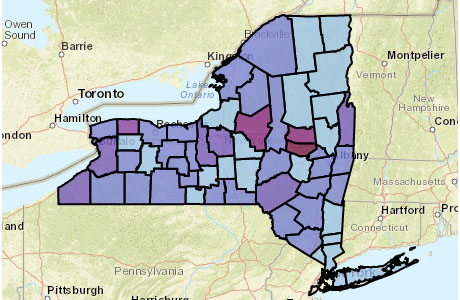Health Department: Healthy diet can reduce lead in bloodstream, decreasing risk of poisoning
Press release:
Lead is a metal that is toxic to our bodies. It has been found in many products including lead-based paint, plumbing, leaded gasoline, toys, ceramics, and more. No amount of lead in our bodies is safe. Young children under 6 years old are most at risk for lead poisoning because their bodies are rapidly developing. A child with lead poisoning can experience learning difficulties, lower IQ, difficulty paying attention, organ damage, and anemia. At very high levels, lead poisoning can be fatal.
“The effects of lead poisoning are irreversible, but there are ways to decrease lead in our blood,” stated Paul Pettit, Public Health Director for Genesee and Orleans County Health Departments (GO Health). “Eating food high in vitamin C, iron, and calcium can help reduce lead being absorbed from the digestive system into the bloodstream.”
Vitamin C absorbs iron and can remove lead from the body. Lack of iron has been associated with higher blood lead levels; however, eating enough iron-rich foods will help reduce lead absorption. Lastly, calcium helps to build and maintain strong bones. Eating enough calcium will reduce the amount of lead being stored in bones.
You can include many foods with vitamin C, iron or calcium in your diet.
Foods containing vitamin C include fruits and vegetables such as:
- Oranges
- Lemons
- Broccoli
- Tomatoes
- Raw Spinach
- Melon
- Peppers
Foods containing iron include types of meats, seafood, beans, fruits, and vegetables such as:
- Chicken
- Beef
- Spinach
- Red kidney beans
- Lentils
- Enriched and fortified breads and cereals
Foods containing calcium include dairy products and some seafood such as:
- Milk
- Cheese and yogurt
- Dark leafy green vegetables such as collard greens and kale
- Pinto beans and lentils
- Canned salmon and sardines
- Calcium-fortified beverages (juices, almond milk)
For any questions and more information on Genesee and Orleans County Health Departments (GO Health) Lead Program, contact the Genesee County Health Department at (585) 344-2580 ext.5555 or Health.GOlead@co.genesee.ny.us. You can also visit the GO Health website at www.GOHealthNY.org.

